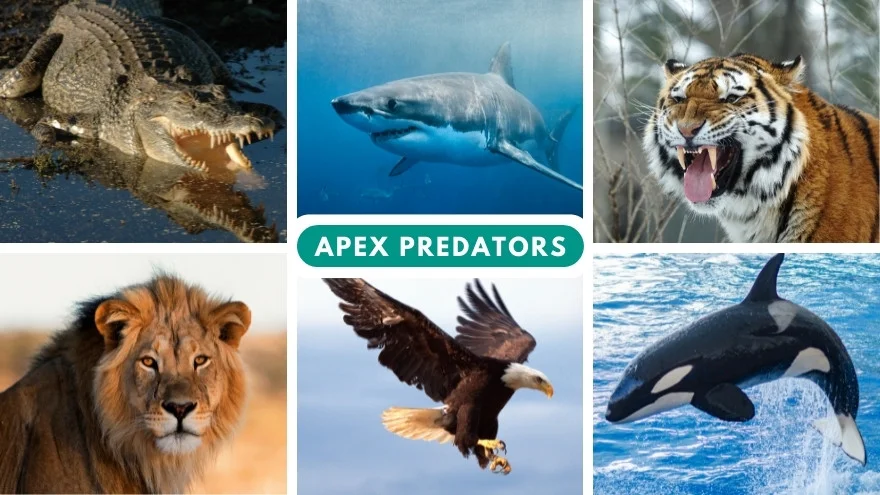To be considered an apex predator is to be atop the food chain. It means that an animal holds no fear of any higher forms of life.
Even though we won’t meet many of these species within our urban realm, they are still out there.
Some of these creatures rule their domain mercilessly and are the top animals in their respective ecosystems.
The lion, king cobra, and the great white shark are just a few popular apex predators.
This article will bring us ‘face-to-page’ with a list of some of the world’s deadliest predators, ranking them in no particular order.
Apex Predators List – The World’s Most Fierce Animals
1. Jaguar
Scientific Name: Panthera onca

Wild cats will rank in most ecosystems atop the list of apex predators, and the Jaguar is no exception in South America.
Jaguars also bite through the skull of their mammalian prey, an unusual killing method as other species in its genus prefer attacking prey in the neck.
The Jaguar’s killing method might be gruesome, but it remains a keystone species, stabilizing ecosystems and regulating prey populations.
Thanks to their excellent swimming ability, jaguars are active on land and in the water. As such, they hunt on land and in the water, feeding on herbivorous and seed-eating mammals, like the white-tailed deer, maintaining the structural quality of forests.1
Jaguars inhabit low-lying tropical habitats, the Amazon’s densely forested regions, and inland wetlands near water bodies.
2. Great White Shark
Scientific Name: Carcharodon carcharias
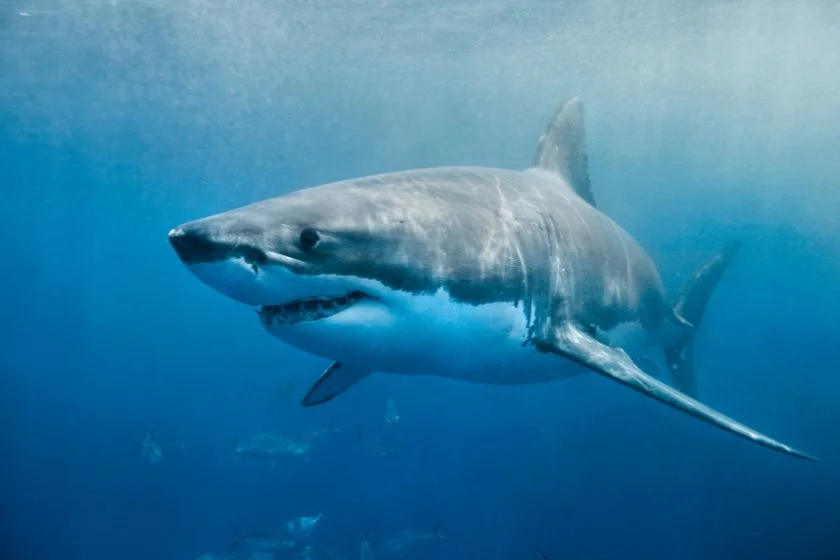
The great white shark is the king of the oceans and one of the world’s most feared animal predators. They hunt their prey by bumping them, then circling back to the prey, swimming with their mouths open and ready to attack.
Great white sharks are the ocean’s top predators, known for their power, speed, and strength.
They are the world’s largest predatory fish and the only shark that regularly feeds on marine mammals, frequently hunting whales, seals, and sea lions.
A great white shark’s bite force can reach nearly 4,000 pounds per square inch.
3. Tiger
Scientific Name: Panthera tigris

The largest species of cat on earth is the tiger. They inhabit many environments throughout Asia, including wetlands, grasslands, and rainforests, while on the verge of extinction in some areas.
These stunning creatures are atop the food chain and are only naturally threatened by humans.
With their exceptional nocturnal eyesight, these animal predators hunt alone and primarily at night.
Their diet consists of small, medium, and large mammals and reptiles, such as wild pigs, deer, water buffalo, monkeys, hares, young elephants, and crocodiles.
4. Bald Eagle
Scientific Name: Haliaeetus leucocephalus

It is impossible to confuse a bald eagle with any other bird due to its white head standing against its enormous, dark-brown body.
When bald eagles hunt, they often glide close above the water and catch fish just below the surface.
They are so dominant that they don’t even need to hunt for food; instead, they frequently scavenge for carrion or take other birds’ carcasses.
5. Lion
Scientific Name: Panthera Leo
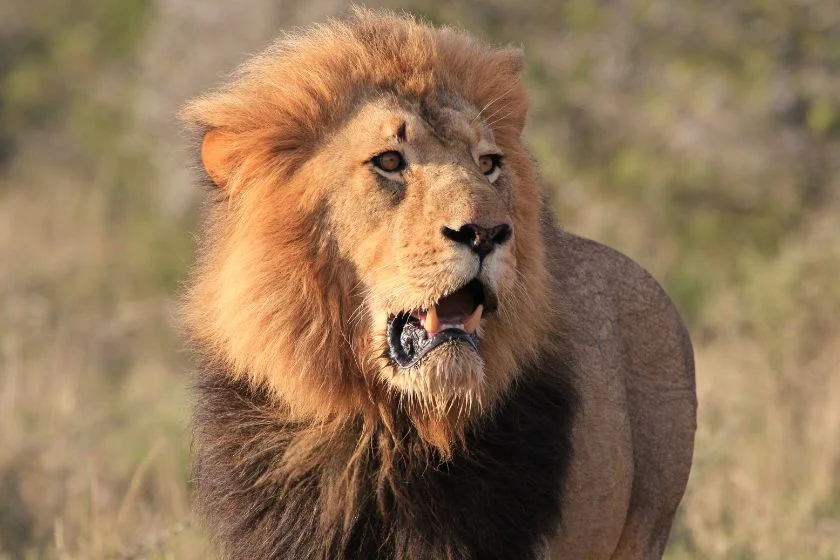
The second-largest living cat species after tigers are lions. Almost all animals in its ecosystem are prey for it. Additionally, animals living in its ecosystem cannot hunt it.
Its dominance over the jungle is due to this. Since they can conceal themselves better and move 30% faster than their male counterparts through the savanna grass, lionesses are the main hunters in a lion pack.
Male lions occasionally engage in hunting, and when they do, they will pursue large prey, such as elephants, buffalo, giraffes, gazelles, impalas, and warthogs.
6. Tasmanian Devil
Scientific Name: Sarcophilus harrisii
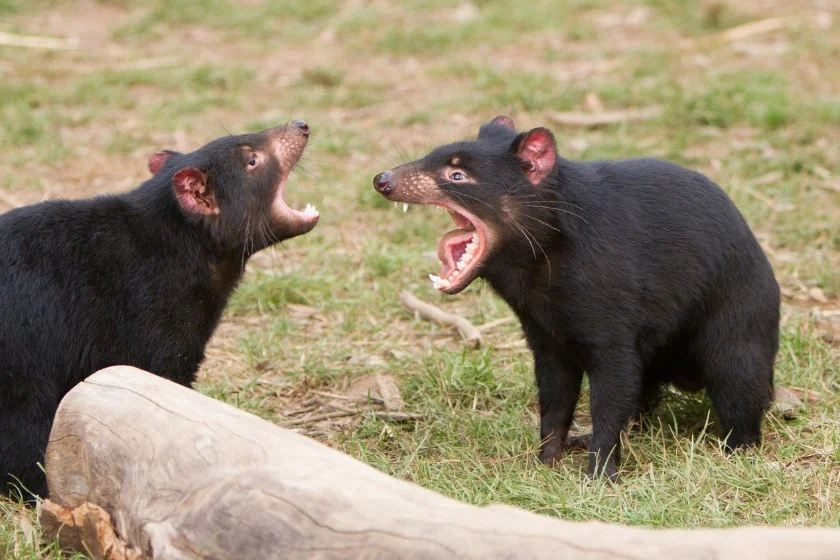
With a limited breeding population in New South Wales, the Tasmanian devil is a peculiar canine-like carnivore that lives on the island of Tasmania.
Tasmanian devils are content to scavenge for small animals like insects, fish, frogs, and birds to subsist.
These predators have a lone hunting strategy that combines ambush, quick assault, and an unusually strong bite relative to body mass.
A Tasmanian devil may expand its jaws 80 degrees (which is incredibly wide) to eat its meal.
7. King Cobra
Scientific Name: Ophiophagus hannah

They are primarily found in Southeast Asia, where they typically prey on smaller snakes, including small pythons, even dangerous snakes like kraits and other cobras, and lizards, birds, and rodents.
The king cobra, which can reach a length of 5.5 meters, is the longest venomous snake in the world.
One of the world’s most venomous snakes, the King cobra has a 50% death rate for untreated human bites. A king cobra bite can kill an elephant in hours.
8. Saltwater Crocodile
Scientific Name: Crocodylus porosus
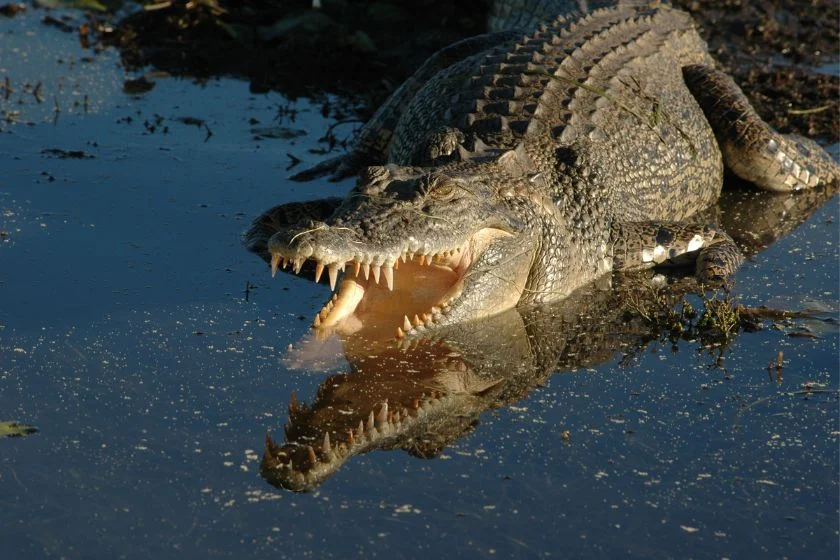
This prehistoric beast can grow to be more than 7 meters long and weigh half a ton. Their healthy population is found in Asia, Australia, and India with salt and brackish water.
They hunt at night and prefer to ambush prey. They wait for their prey to approach the water’s edge, then strike without notice. They drag the animal into the water.
The crocodile’s enormous jaw pressure kills most animals, but some are drowned.
9. Killer Whale
Scientific Name: Orcinus orca

Also known as Orcas, this predator interestingly belongs to the dolphin family Delphinidae; a theory on the name killer whale is that they were revered ‘killers of whales’ by whalers in the past.
Killer whales are enormous hunters with no predators and hunt in family pods, targeting anything from fish to adult whales.
Killer whales have even been seen killing an adult blue whale. According to a recent study, they are so fearsome that even great white sharks are scared of them.2
10. Nile crocodile
Scientific Name: Crocodylus niloticus

Nile crocodiles can be found in various habitats, including rivers, lakes, marshes, streams, swamps, and dams.
And, yes, there are crocodiles in the Nile. But what distinguishes this reptile as an apex predator?
Crocodiles of the Nile are extremely dangerous. They are large, fearless animals with extremely powerful bites that can take down anything, including a full-grown hippopotamus.
They’ve even been observed eating other crocodiles. They are the apex carnivores. Their reign goes beyond the wild, as an estimated 200 to 300 people suffer Nile crocodile fatalities annually.
Nile crocodiles are also responsible for more human attacks than other crocodile species.
11. Lynx
Scientific Name: Lynxes
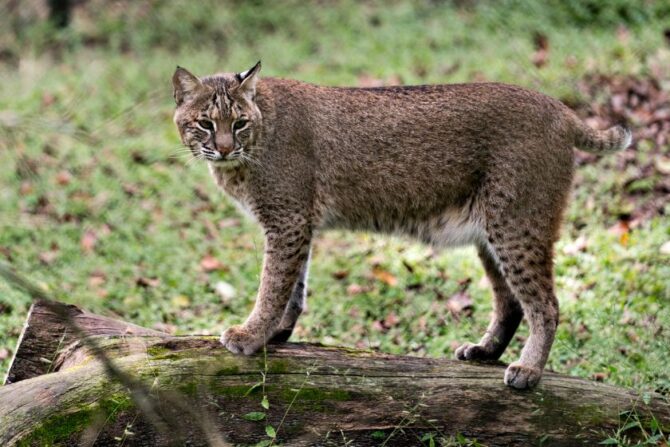
This lone cat can be found in remote North American, European, and Asian northern forests.
Lynx prefer dense tree cover and are particularly good at hunting roe deer; smaller predators, such as foxes, are also on the lynx’s menu.
A lynx can see 6 times better than a human in the dark, can spot prey from 300 meters away, and has a finely tuned ear that allows it to hear the smallest rustle, making it an excellent stalker.
12. Bull Shark
Scientific Name: Carcharhinus leucas

The Great White Shark and Tiger Shark are ferocious and rank high in any apex predators list, but the bull shark is more fearsome, being notorious as one of the most dangerous animals in Asia.
This beast terrifies not only cognitive humans but most animals in their ecosystem.
While the bulk shark may be of no threat to other large sharks and whales, they have a large appetite, eating smaller sharks, marine mammals, turtles, and seabirds.
The bull shark is noted for its adaptiveness, aggressiveness, migration ability, and preference for shallow coastal waters.
13. Brown Bear
Scientific Name: Ursus arctos

It is best if you are expecting something other than ‘Winnie-the-Pooh.’ It is one of the world’s largest land predators and a true apex predator, reaching heights of 2.5 meters when standing on its hind legs and weighing up to 770 kg.
Their teeth can deliver a fatal blow instantly, and their powerful swipes can slash open their prey in seconds.
Fruit, honey, insects, crabs, salmon, birds, eggs, rodents, squirrels, deer, elk, and wild boar make up a brown bear’s diet.
14. Dhole
Scientific Name: Cuon alpinus
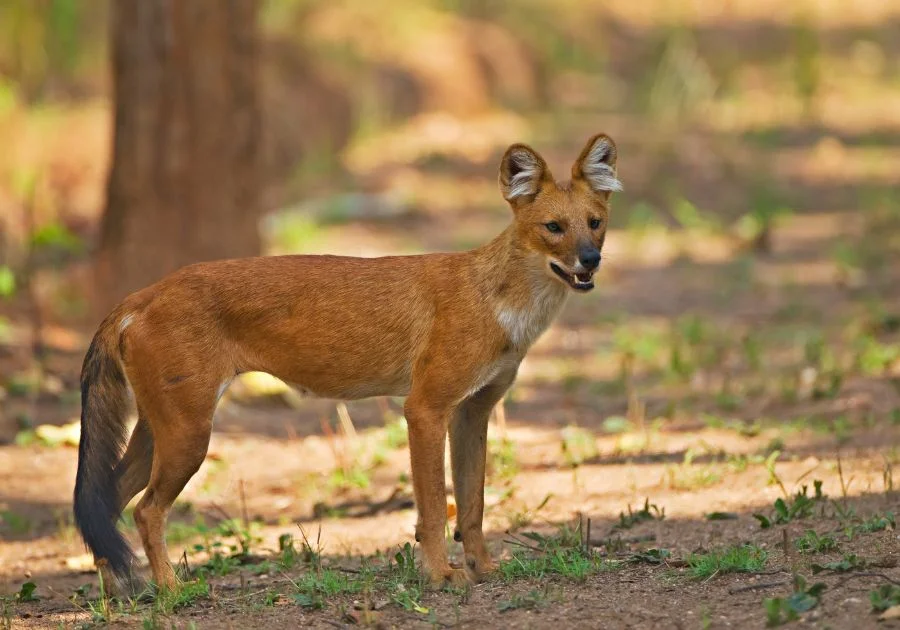
This Asiatic wild dog is a highly social animal; dholes are known to hunt in packs of 5 to 12.
These wild dogs are carnivores that prey on deer or sheep. However, dholes have been observed attacking animals as large as a tiger or bears.
They can reach speeds of up to 45 mph. Their natural habitat consists of dense forests, scrub forests, plains, mountains, and jungles.
15. Polar Bears
Scientific Name: Ursus maritimus

These bears can be found in the arctic marine region as they stand atop the arctic food chain.
They can detect prey from over 20 miles away, and an animal is hidden beneath three feet of snow. Seals, specifically ringed and bearded seals, are their main prey.
They feed on young walruses, Greenland seals, beluga whales, and narwhals on the sea ice. Polar bears capture reindeer, musk oxen, and rodents on land.
16. Hippopotamus
Scientific Name: Hippopotamus amphibious

The hippopotamus, also known as the hippo, is a fascinating species that are native to sub-Saharan Africa and is the second largest land animal after the elephant.
It is most powerful and dangerous in the water. Hippos are fiercely protective of their space, especially in rivers.
Hippo assaults in Africa are thought to claim the lives of 500 people each year, making these beasts extremely dangerous.
They have incredibly pointed teeth. The bite force of a hippo’s jaw is 1800 PSI. Theoretically, they could split a crocodile in half with their powerful teeth.
17. Komodo Dragon
Scientific Name: Varanus komodoensis
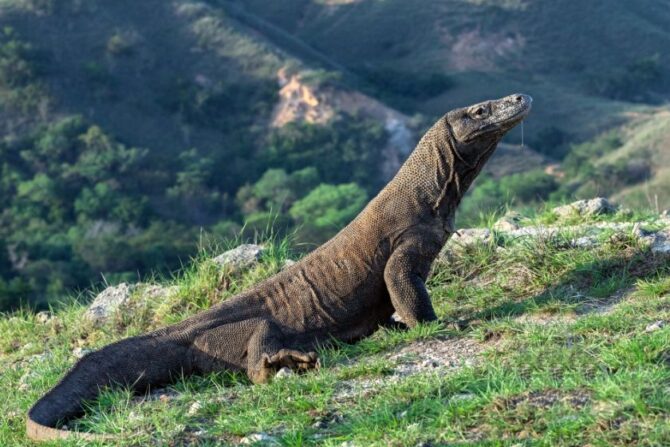
With a maximum length of 3 meters and a weight of 160 kilos, the Komodo dragon is the biggest living reptile on the planet.
They live in areas of savanna and tropical dry forest. Graze on any meat, including carrion, water buffalo, deer, and pigs.
Anything eluding their strong legs and pointed teeth will succumb to blood poisoning within 24 hours because their saliva carries poisonous bacteria.
18. Cougar
Scientific Name: Puma concolor
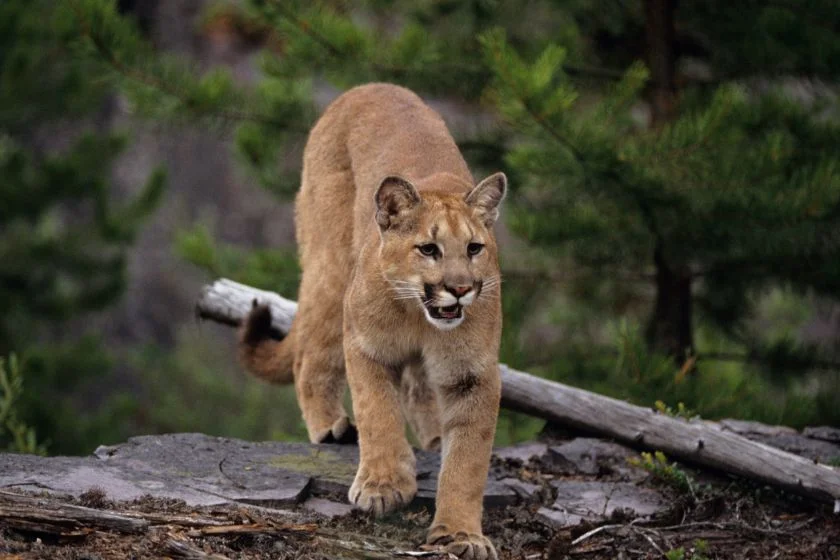
This large cat bears the mountain lion or puma, among other names. North America, Central America, and South America are the puma’s natural habitats.
They are cunning animals that stalk their prey. Pumas are very wise animals. When possible, they stay away from people.
They have keen claws, potent bites, and excellent hunting senses that aid in spotting prey. Both animals and people can suffer fatality from a single mountain lion bite to the throat.
19. Giant Otter
Scientific Name: Pteronura brasiliensis
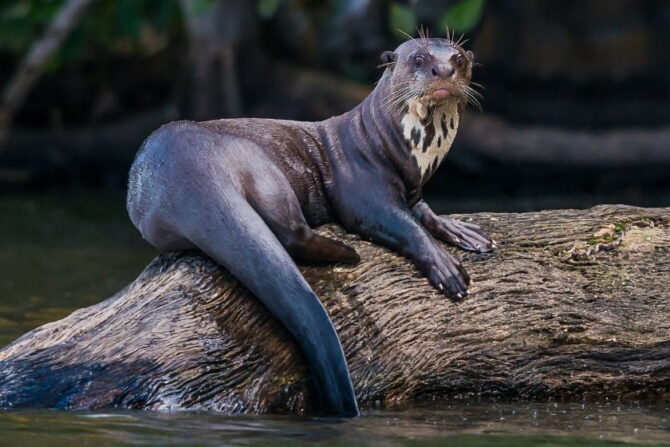
As their name suggests, these are the longest otter species, reaching lengths of up to six feet.
Like other otters, they are adept swimmers who can move quickly and easily, allowing them to catch fish. They live only in South America and are found in wetlands, rivers, and rainforests.
Their strong jaws can provide the proper support needed for their teeth to harm their prey sufficiently. The only significant natural predators of giant otters are humans.
20. Snow Leopard
Scientific Name: Panthera Unica
In Asia, including the Himalayas and the southern Siberian mountains in Russia, snow leopards can be found in the continent’s high mountain ranges.
Snow leopards will consume nearly anything they can, frequently going after prey much bigger than themselves.
By ambushing their prey from above, they hunt their prey. They eat small mammals like hares and wild sheep, goats and goats.
21. Black Mamba
Scientific Name: Dendroaspis polylepis
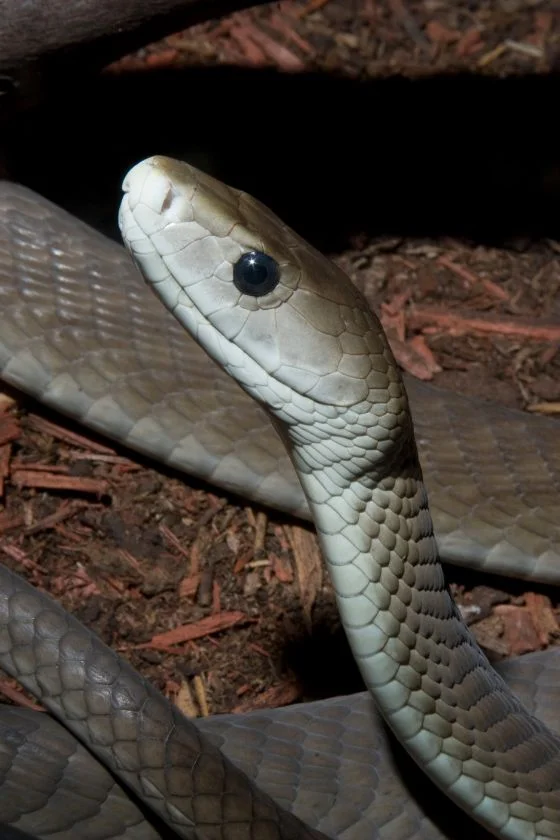
So famous is its bite that it was dubbed the “Kiss of Death.” A single bite can cause a human to pass out within 45 minutes.
Contrary to what their name might imply, black mambas are brownish. Their blue-black mouth, not their skin, gave them their nickname.
The black mamba is the fastest and deadliest snake in Africa. It is responsible for reigning many ecosystems in their geographic range; little wonder rodents, birds, and some snakes in their habitats forcefully succumb to fill their bellies.
The black mamba occupies the savannas, rocky hills, and open woodlands of South and East Africa.
22. Emerald Tree Boa
Scientific Name: Corallus caninus
The emerald tree boa is a constrictor like other boa species, primarily feeding on small mammals but occasionally eating some smaller bird species, lizards, and frogs.
Despite being a non-venomous snake, the emerald tree boa is no food to any other animal. We can attribute its food chain success to its size, growing about six feet long.
Its highly developed front teeth, which could be proportionately larger than any other non-venomous snake’s, might be another factor that makes it an apex predator in its ecosystems.
23. Giant Petrel
Scientific Name: Macronectes
Large seabirds called giant petrels can be found near Antarctic and sub-Antarctic islands.
They are ferocious birds that can rip open carcasses with their powerful beaks so they can eat them.
Larger birds, such as albatrosses, have been known to be drowned or attacked by giant petrels before being eaten.
24. Green Anaconda
Scientific Name: Eunectes murinus

The green anaconda has a reputation for size; it is the heaviest and one of the longest snakes. The anaconda occupies swamps, tropical rainforests, marshes, and slow-moving streams.
While it is a non-venomous snake, it comes second to none in the food chain, reigning over other animals in its ecosystem.
Mature anacondas may grow over sixteen feet and weigh over 150 pounds, which is almost impossible for other animals to contend with.
Green anacondas are constrictors, attack animals in ambush, and swim excellently. Therefore they can overpower many animals in the water or on land, including deer and caimans.
25. Wolf
Scientific Name: Canis lupus

The wolf is native to North American ecosystems, occupying tundras, woodlands, forests, grasslands, and deserts, where they hunt in packs.
While they might not be amongst the largest wildlife in the area, they prey on many species that share their geographical range, including the caribou, moose, deer, bison, and other small animals, to consume approximately four pounds per day.
Related: 10 Largest Wolves In The World (Discover The Biggest Wolf Ever)
26. Cheetah
Scientific Name: Acinonyx jubatus
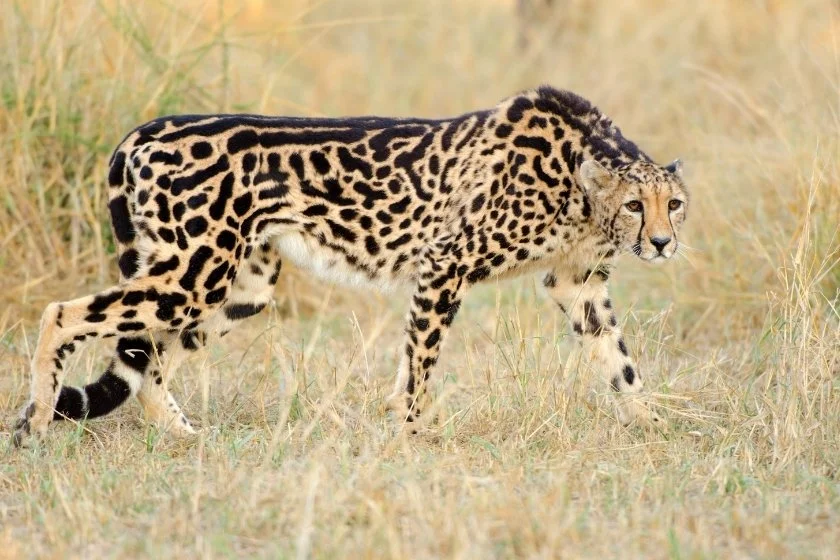
Another wildcat representative on our list is the cheetah, the world’s fastest land animal. Cheetahs are large cats that occupy savannahs, arid mountain ranges, and hilly desert terrains.
Remarkably, they are prey to none, making them fearsome to many animals, including the warthog, gazelle, kudu, antelope, and hartebeest, by stalking them, charging towards them, tripping them during the chase, and biting their throat to suffocate them to death.
27. Reticulated Python
Scientific Name: Malayopython reticulatus

The species was dubbed after its net-like scale pattern. The reticulated python is the world’s longest snake and one of the three heaviest. It can grow to be over 6 meters (19.7 feet) long.
They prefer to live in rainforests, woodlands, and grasslands and are apex predators despite being non-venomous snakes.
We can attribute this snake’s predator position to its size and constriction ability.
Therefore they can go about the jungle eating wild boar, birds, rodents, and small primates without fear of being hunted.
28. American Alligator
Scientific name: Alligator mississippiensis

Lakes, marshes, swamps, and slow-moving rivers in the United States and Mexico house these replies, but tales and legends about their reign as apex predators continually roam the science sphere.
The American alligator is a popular crocodilian species with a terrifying reputation as a non-friendly reptile.
The reptile can generate about 300 pounds per square inch, enough to rip off most animals within its habitat.3
American alligators eat turtles, fish, small mammals, and snakes and have no natural predators in the wild.
29. Burmese python
Scientific Name: Python bivittatus
You might wonder if an invasive species can feature as an apex predator. The Burmese python is an extant example of one such species atop its food chain.
These species are causing a steep decline in some native species populations in the Florida Everglades, where they are introduced.
The Burmese python impales and squeezes its prey to death; sadly, birds and small mammals like rodents constitute the snake’s primary diet.
30. Hyena
Scientific Name: Hyaenidae
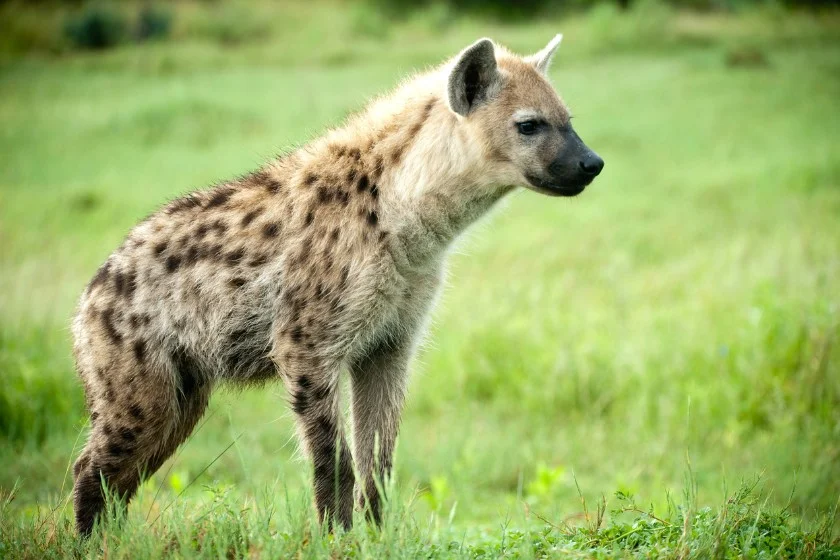
While hyenas might not be geographically diverse like the wild cats, occupying Africa’s savannas, sub desserts, grasslands, forest edges, and woodlands, they are similar to the wild cats in their position on the food chain.
Hyenas are apex predators that control prey populations and prevent the spread of diseases, primarily by consuming animal remains that could rot and cause diseases.4
With unparalleled bone-crushing abilities, hyenas have the perfect defense mechanism to fight off potential predators, remaining atop the food chain in most ecosystems.
Frequently Asked Questions
Are all wild cats apex predators?
Lions, tigers, leopards, jaguars, and cheetahs, being the most popular wild cats, do not make them the only wild cats.
The margay, clouded leopard, and ocelot are other wild cats. Interestingly, not all wild cats are apex predators; the ocelot, for instance, preys on many animals but is prey to anacondas, caimans, and large eagles.
Are humans apex predators?
The term “apex predator” usually refers to wild animals with no natural predators. Humans do not live in the wild, and logically do not match the term’s definition.
However, humans prey on almost every creature for various purposes, from food, clothing, and ornaments to killing these animals for defense.
Are all poisonous snakes apex predators?
While snakes are famous for their lethal bites, not all species are apex predators. The king cobra, emerald tree boa, and reticulated python are fortunate to be in this bracket.
Still, the mongoose is famous for challenging highly venomous snakes, including some cobra species, and eating them. The king cobra occasionally turns to kraits and Indian cobras for food.
What animals are usually at the bottom of the food chain?
In most ecosystems, photosynthetic plants lay at the base of nutrition. However, insects are the animal kingdom’s representatives at the bottom of the food chain, while small reptiles, amphibians, and mammals like rodents may follow.
Wrap Up
While this list of apex predators only covers a small selection of species, there are different types of predators worldwide, and it is important to understand them all if you are interested in the natural world.
Each animal predator has unique skills and behaviors that enable them to be an effective hunter.
These are the most dangerous predators, and in the eventuality of encountering them, you must take precautions.
References & Notes
- Nunez R., Miller B. and Lindzey F. 2000. Food habits of jaguars and pumas in Jalisco, Mexico. Journal of Zoology.
- Jorgensen J. S., Anderson S., Et. al. 2019. Killer whales redistribute white shark foraging pressure on seals. Scientific Reports.
- Gator Facts [pdf]. Texas Parks and Wildlife.
- Dell’Amore C. 2019. Hyenas have a bad rap—but they’re Africa’s most successful predator. National Geographic.
